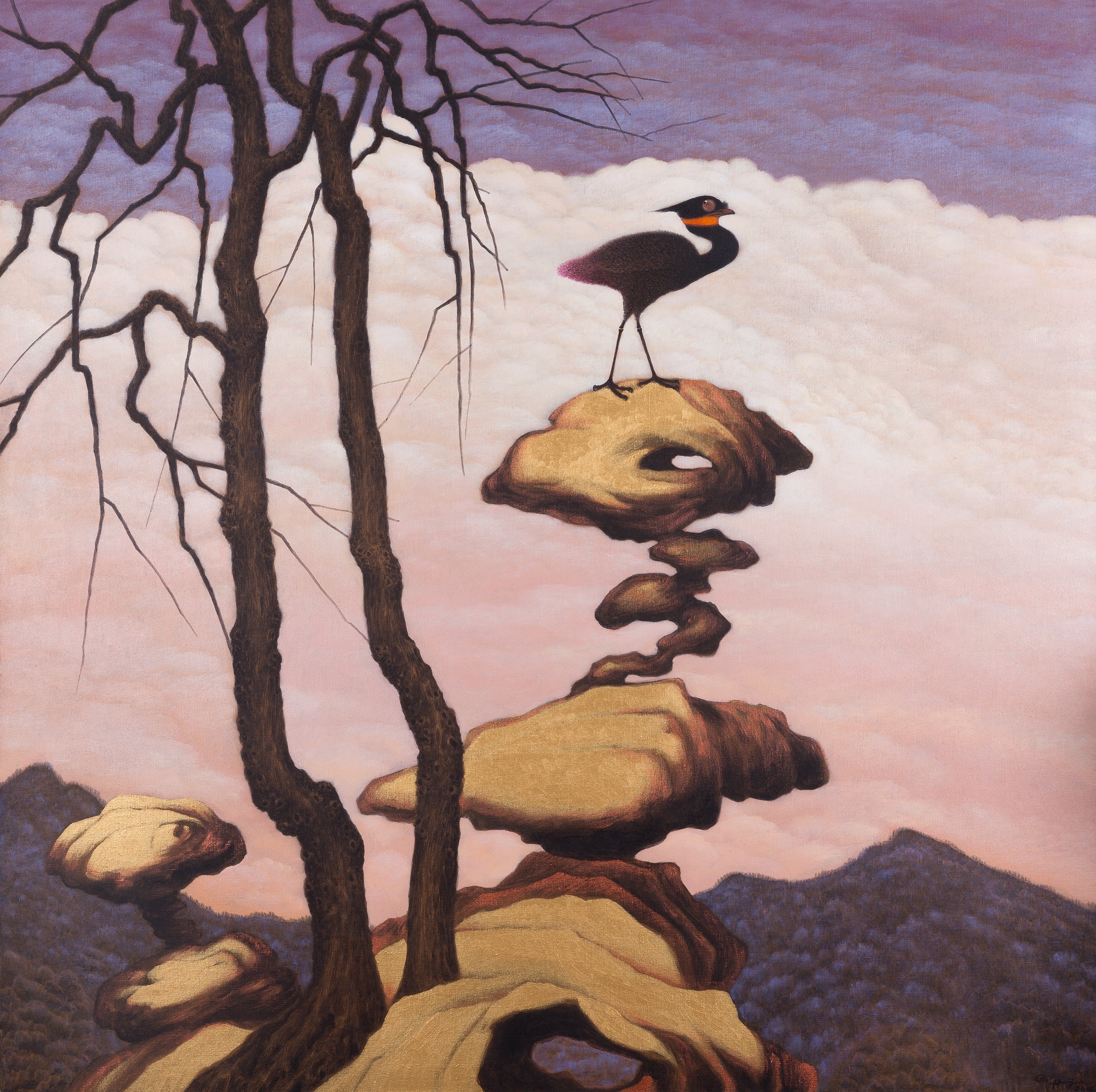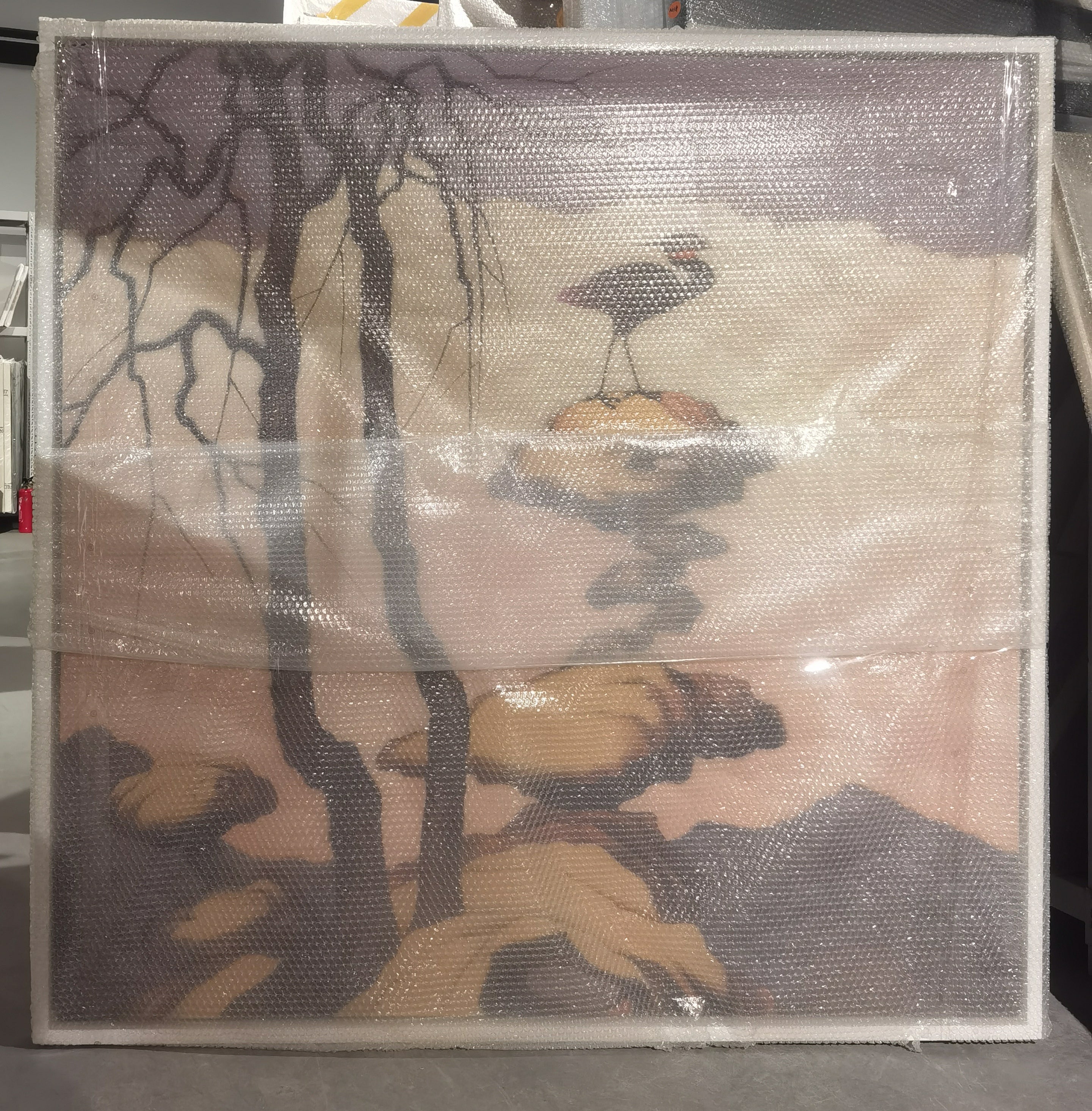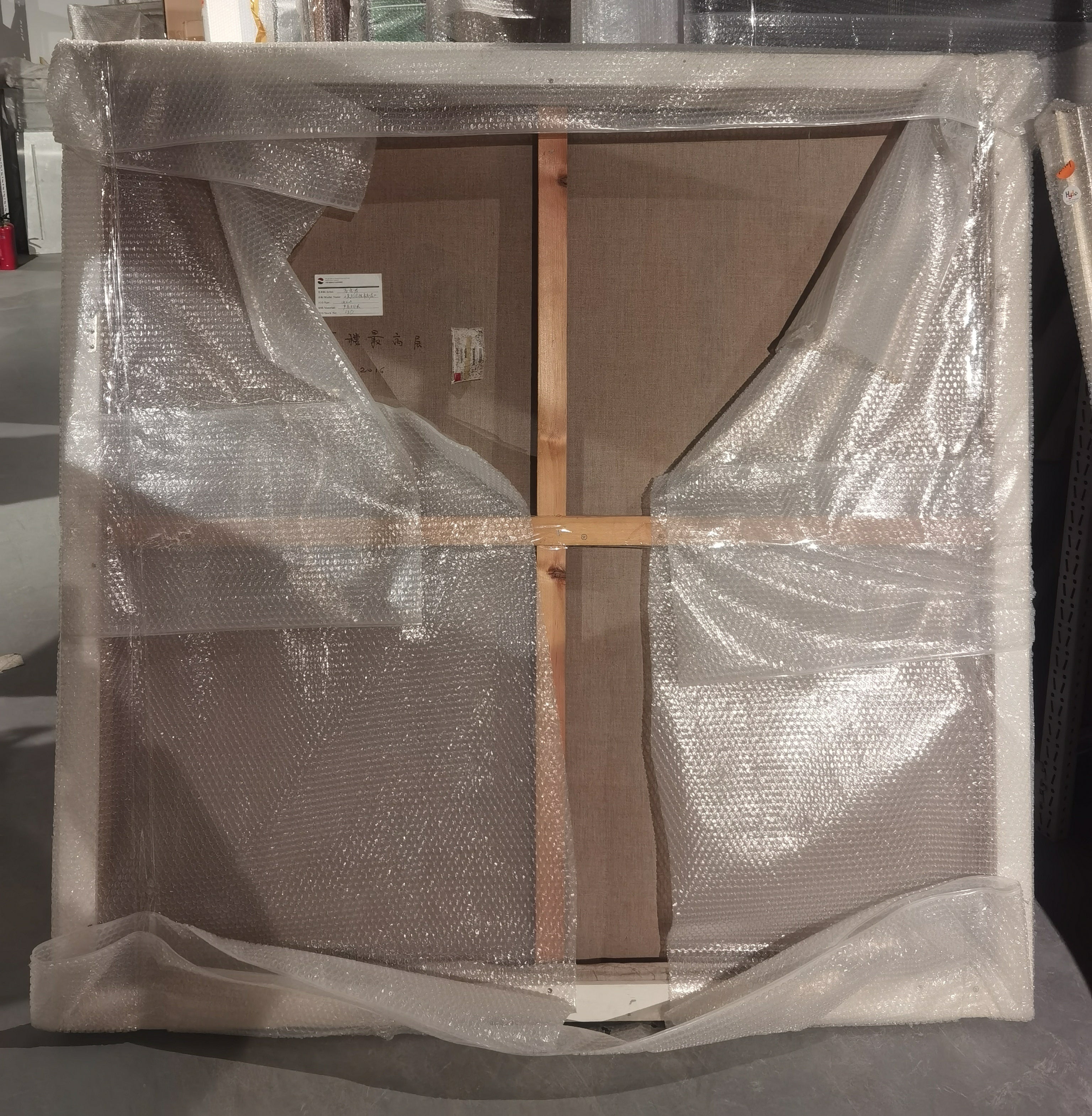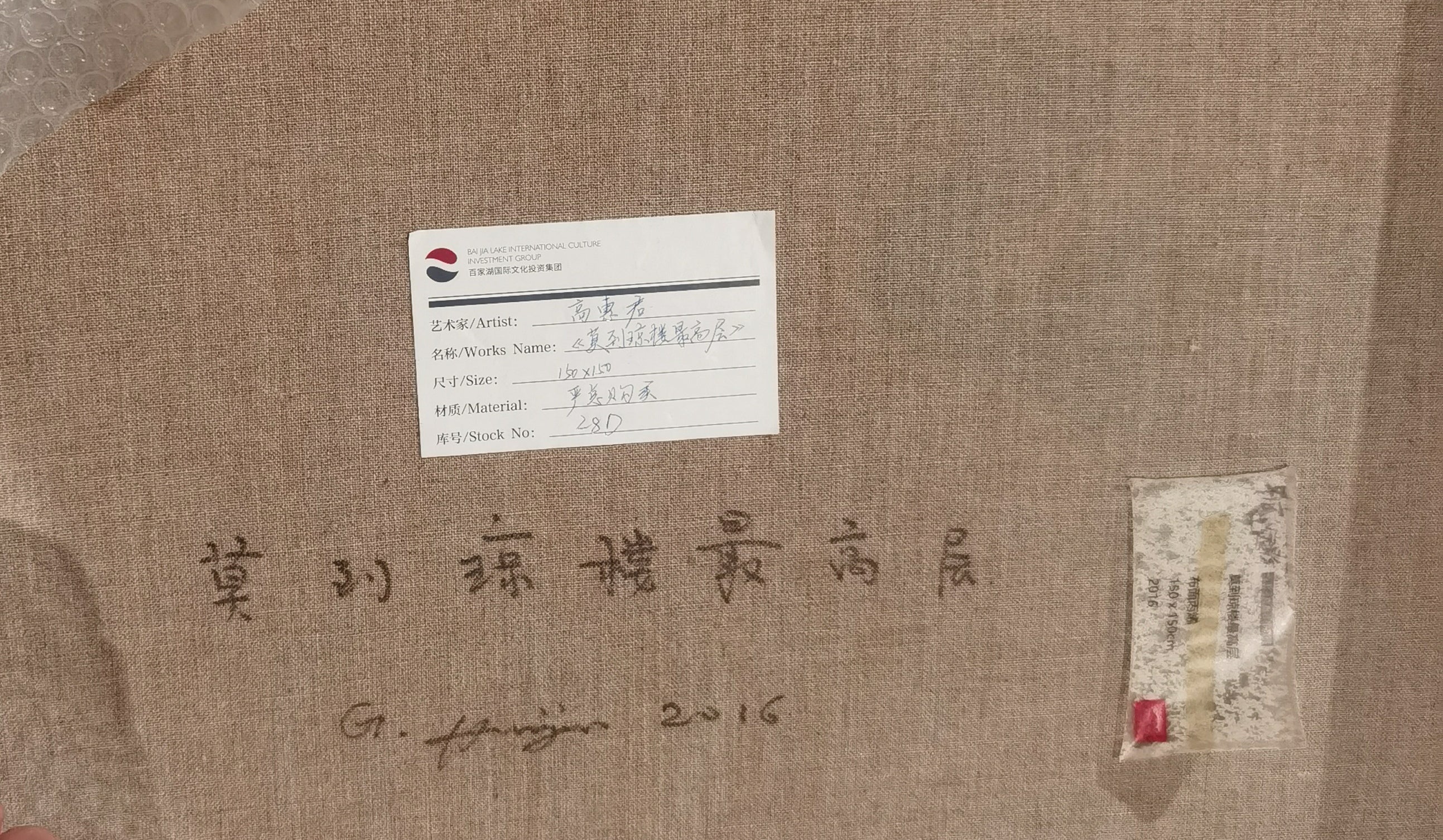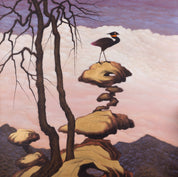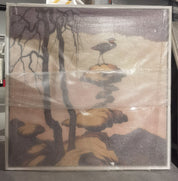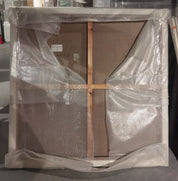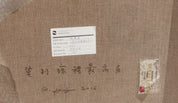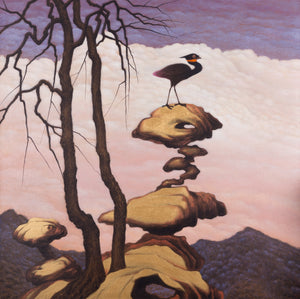Don't Go to the Top of the Qiong Building
Huijun Gao
Artwork Details
Artwork Description
Title: Don't Go to the Top of the Qiong Building
Artist: Huijun Gao
Date: 2016
Medium: Acrylic on canvas
Dimensions: 150 x 150 cm
1. Artwork Identification
Don't Go to the Top of the Qiong Building is a compelling square-format acrylic painting by contemporary Chinese artist Huijun Gao. Painted in 2016, the work measures 150 x 150 cm and features a surreal rocky precipice rising through clouds, crowned by a poised bird. Two stark, leafless trees frame the vertical composition, lending the scene a sense of poetic stillness and isolation.
2. Artistic Style and Influences
This painting is an exemplary instance of Gao’s nuanced blend of Chinese classical landscape tradition with contemporary surrealist aesthetics. The composition recalls the spatial layering and meditative mood of traditional shan shui painting, while the hyper-stylized rock formations and anthropomorphic stance of the bird suggest a more fantastical, even allegorical, narrative. The work’s lyrical and philosophical overtones resonate with Gao’s longstanding practice of introspective, emotionally charged landscape painting.
3. Historical Context
By 2016, Huijun Gao had firmly established his studio practice in Songzhuang, Beijing’s thriving artist village. During this time, his work consistently rejected overt modernist or political themes, instead nurturing a quiet, inner-directed visual language. This painting's cryptic Title: references the mythical "Qiong building," an allusion that reinforces the metaphysical terrain Gao so often traverses—balancing solitude, melancholy, and transcendence.
4. Provenance
Provenance documentation can be provided upon contact.
5. Condition and Conservation
The artwork is in very good condition. The canvas remains structurally stable, with no surface abrasions, losses, or visible signs of wear. Colors retain their depth and integrity.
6. Artistic Significance
Don't Go to the Top of the Qiong Building stands as a significant example of Gao’s lyrical and symbolic landscape work. The piece juxtaposes serene natural elements with a mystical tone, inviting multiple readings—perhaps as a meditation on ambition, solitude, or existential caution. Gao’s masterful control of atmosphere and composition imbues the painting with a timeless quality, making it a resonant and philosophically rich work within his broader oeuvre.

